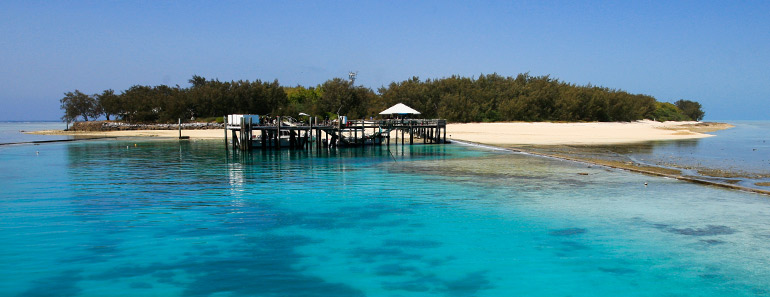From pv magazine Australia.
Australian universities continue to climb up the renewable energy league with many of their efforts to offset emissions, by procuring carbon credits, but also by actively developing their own renewable assets.
The University of Queensland (UQ), which has pledged to offset 100% of its electricity needs with renewables by 2020, is now looking to develop a solar PV+battery hybrid at its maritime research stations in the Great Barrier Reef under an EPC contract inked with the Australian arm of German project developer juwi.
The Heron Island Research Station project consists of a 500 kW rooftop solar PV array combined with a 0.6 MWh vanadium flow battery integrated with diesel generators using a microgrid control system.
According to juwi, it is expected to deliver over 80% of the research facilities annual electricity needs and be operational in mid-2019.
The project builds on the success of juwi’s landmark hybrid project at a copper mine site in Western Australia – Sandfire DeGrussa, which comprises a 10.6 MW solar facility coupled with a 6 MWh battery facility – integrated with an existing diesel generator.
Touted as the largest off-grid solar-battery hybrid globally and the largest solar array to provide peak power at a mine site in Australia, DeGrussa reached full operation in May 2016.
Currently, it is offsetting more than 450,000 liters of diesel per month, exceeding juwi’s projection of five million liters of fuel saved per year.
“Hybrid power solutions offer the potential to significantly reduce the amount of diesel consumption in often pristine environments whilst maintaining reliability. On top of that hybrid power stations now generate electricity at a lower cost than traditional fossil fuel power stations,“ said Dave Manning, Global Head of Hybrid for juwi.
While focused on a niche hybrid/off-grid segment, the Brisbane-based developer announced earlier this year its initiative to expand activities into utility scale PV projects. In July, the company launched a Request for Proposal to acquire large-scale solar projects from developers and landowners in New South Wales and Victoria.
As one of the clean energy leaders among Australian universities, UQ will add the research center hybrid project to its strong renewable energy portfolio.
In addition to its 50,000 rooftop PV modules already in place at its campuses, UQ has announced plans to develop a 64 MW solar farm near Warwick in the state’s Southern Downs region.
According to the University, the large-scale solar farm, which comes with a price tag of $125 million, will pay for itself over the life of the project, through electricity savings.
This content is protected by copyright and may not be reused. If you want to cooperate with us and would like to reuse some of our content, please contact: editors@pv-magazine.com.




By submitting this form you agree to pv magazine using your data for the purposes of publishing your comment.
Your personal data will only be disclosed or otherwise transmitted to third parties for the purposes of spam filtering or if this is necessary for technical maintenance of the website. Any other transfer to third parties will not take place unless this is justified on the basis of applicable data protection regulations or if pv magazine is legally obliged to do so.
You may revoke this consent at any time with effect for the future, in which case your personal data will be deleted immediately. Otherwise, your data will be deleted if pv magazine has processed your request or the purpose of data storage is fulfilled.
Further information on data privacy can be found in our Data Protection Policy.